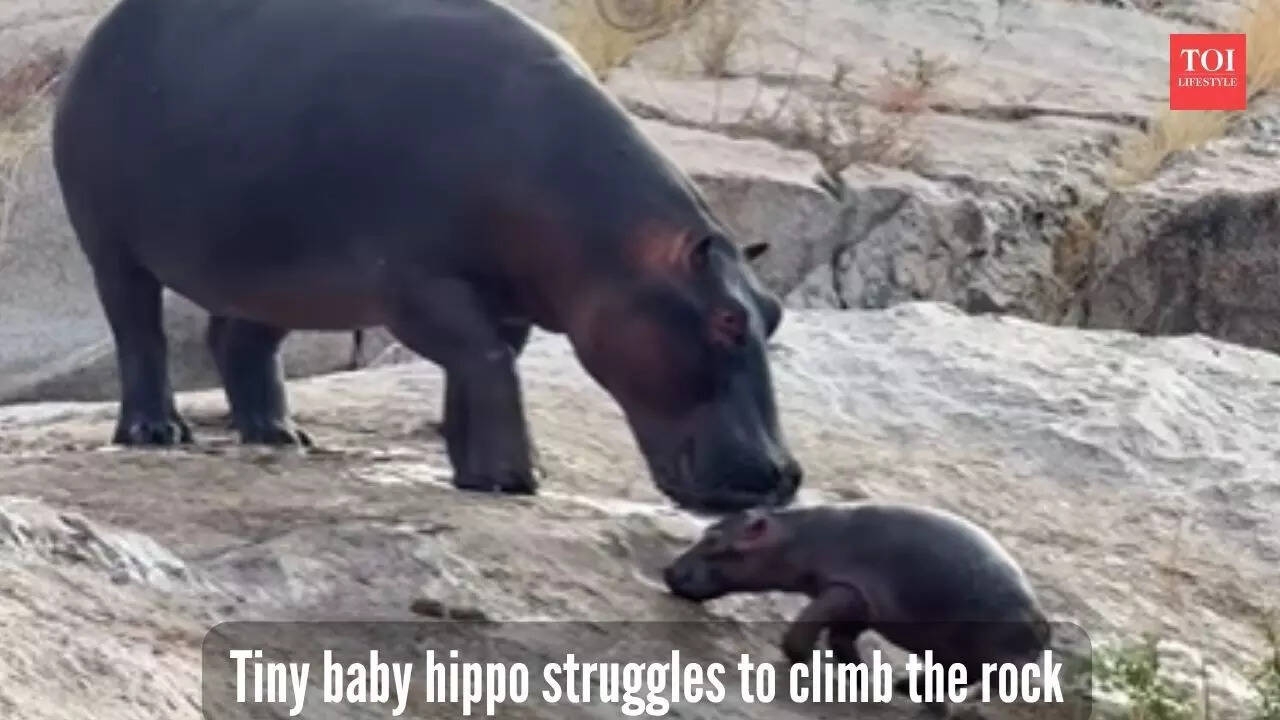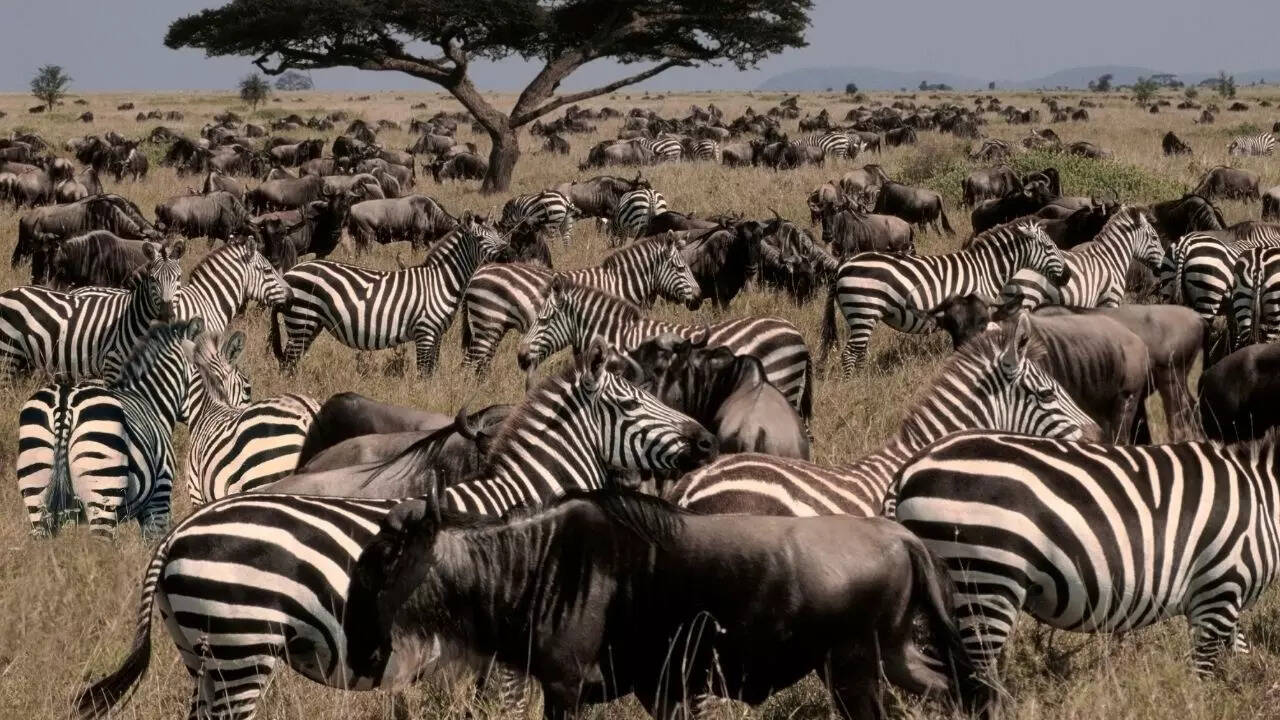ARTICLE AD BOX

A heartwarming video captures a tiny hippo struggling to climb a slippery rock in Serengeti National Park, determined to keep up with its herd. This display of courage highlights nature's resilience as animals seek safer waters during dry seasons. The footage, shared by a safari guide, has charmed viewers online.
It's always a delightful experience to watch baby animals doing adorable actions around their parents in the jungle or a wildlife park, be it an elephant calf, a puppy, or a tiny pygmy hippo like Moo Deng.
Their videos go viral on social media when captured and uploaded by a tourist or caretaker, and this time, a heartwarming video of a tiny hippo has gone viral that is winning hearts online.

Tiny hippo struggles to climb slippery rock (Photo: Manja Kema/ Instagram)
Tiny hippo struggles to climb a rock
A video captured by safari guide and wildlife photographer Manja Kema shows a baby hippo struggling in the Serengeti National Park, Tanzania. The little hippo was seen spinning its wheels on a slippery rock as it tried to keep up with its herd. This amusing moment was shared by Kema on his Instagram, where he described the scene vividly, saying, "A little baby hippo trying to climb a slippery rock, determined to follow the herd as they leave the shrinking water pods in search of deeper and safer waters"This small but brave hippo is a shining example of nature’s resilience and courage.
Kema added, "So small, yet so full of courage. Nature’s resilience in its purest form." The video, full of charm and humour, captures the spirit of survival and determination that wildlife showcases, even in tricky situations like navigating slippery rocks or shrinking water sources during dry seasons.
Interesting facts about Hippos
Hippos are known to travel in herds, moving towards safer waters, especially when river or pond levels drop. This survival strategy is critical during hot seasons in places like the Serengeti, where water bodies can shrink, forcing animals to move often.
The baby hippo’s effort to keep pace despite the slippery challenge is a true representation of not just individual bravery but also the importance of sticking with the group for safety and support.

Tiny hippo with it's mother
The Serengeti National Park- How to reach there, what all to do
Serengeti National Park in Tanzania is one of the world’s most famous wildlife destinations, which provides spectacular views and unforgettable safari experiences to the travellers. To reach Serengeti, most travelers fly into Kilimanjaro International Airport near Arusha, about 50 kilometers away. From there, you can take a short domestic flight to one of the airstrips inside the park, or enjoy a scenic, though bumpy, drive of around 8 hours through the beautiful Tanzanian landscape. Many visitors combine road trips with stops at Ngorongoro Crater on the way, enriching their safari experience.

Serengeti National Park
Once inside Serengeti, the adventure truly begins
The park is popularly known for its incredible wildlife, including the iconic “Big Five” which includes the lions, elephants, leopards, buffalo, and rhinos.
It is also famous for the Great Migration, where vast herds of wildebeest, zebras, and gazelles move across the plains in search of greener pastures. Birdwatchers find over 500 species here, and other animals like cheetahs, hippos, giraffes, and crocodiles thrive in this rich ecosystem.Exploring Serengeti can be done through guided safaris, by vehicle with experienced guides, offering safe and enlightening encounters with nature.Whether you stay in luxury lodges, mid-range camps, or simple tented camps, every night under the African sky is magical. The park’s vast open plains, rolling hills, and winding rivers promise an authentic safari experience filled with wonder.

 5 days ago
6
5 days ago
6









 English (US) ·
English (US) ·